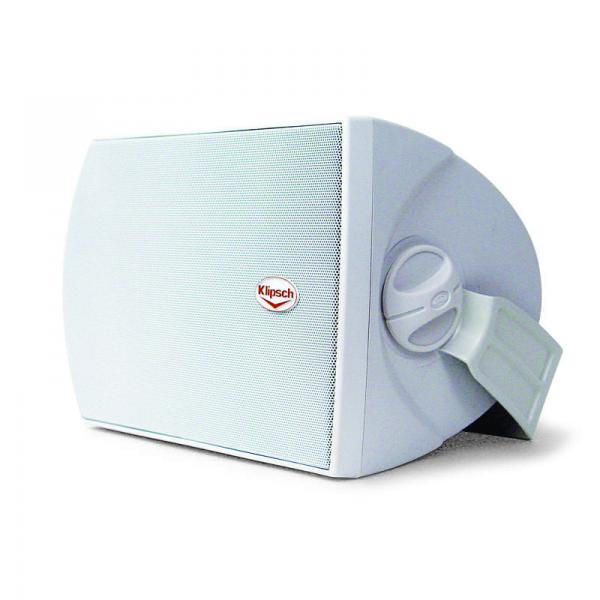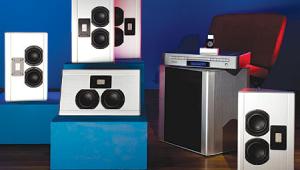Review: Klipsch AW-525 outdoor speaker

Klipsch is of course known for making high-efficiency speakers with horn tweeters. Whether or not that concept pays off indoors, where high-powered amps are common, is a subject of debate among audiophiles. But it definitely pays off outdoors. There, you have no room gain to boost the bass, so you may need more volume. And many of the multiroom audio systems that are often employed to power outdoor speakers provide only 20 or 30 watts per channel. Thus, the more sensitive the speaker, the better chance you have of getting backyard-filling sound.
The horn in the 11.8-inch-high AW-525 is mounted to a 1-inch titanium-dome tweeter. The 5.25-inch, injection-molded graphite woofer sits in a ported enclosure; the slot-shaped ports flank the tweeter and vent forward. For an outdoor speaker, the crossover is pretty complex: three capacitors, two chokes, and one resistor, so the filter slopes are probably 18 dB/octave electrical on the tweeter and 12 dB/octave on the woofer.
Because the ports go straight back into the speaker and have no additional screening on the other end, the AW-525’s guts have only the front grille to protect them from the outside world. I expect the speaker will tolerate a typical rainstorm, at least, but I wouldn’t recommend blasting it with a hose or putting it in the path of a sprinkler.
Performance
Our listeners gave the AW-525 two thumbs up and one “meh.” Geoff was the most enthusiastic, picking the Klipsch as his favorite. To him, the speaker’s tweeter was the best of the bunch because of the vivid, lively response and big soundstage it created. “It has a little more sibilance than Speaker 0 [the Definitive Technology AW5500],” he said, “but that’s an acceptable tradeoff for the more lively sound. It also has more of a midrange and bass push than Speaker 0, so the bass is better and there’s a nice warmth to the sound.”
Lauren picked the AW-525 as her second favorite. To her, it sounded good overall but a little brighter than the others; she found that the treble overpowered the bass a bit. She also found the bass to be “flat,” by which she meant “unengaging” rather than “even.”
That leaves me as the “meh” vote. When I listened to Toto’s “Rosanna,” a track I use because it really “lights up” the entire audio range, I found the highs tizzy, the upper midrange energy lacking, and the bass too soft. Like Lauren, I preferred the punchy low end of the Niles OS5.5. The Klipsch isn’t a bad speaker by any measure, but the apparent loss of energy in the crossover between the woofer and the tweeter kept me from loving it.
The Verdict
While the AW-525’s sound might not thrill everyone, it’s clearly a good choice for some. Our guess: If you like Klipsch’s indoor speakers, you’ll like its outdoor speakers.
Test Bench
Frequency response of the AW-525 measures 77 Hz to 20 kHz ±9.1 dB on-axis, ±7.4 dB avg 0°-30°. Measured impedance is 3.7? minimum, 9? average. Sensitivity from 300 Hz to 10 kHz averages 86.0 dB.
- Log in or register to post comments




























































